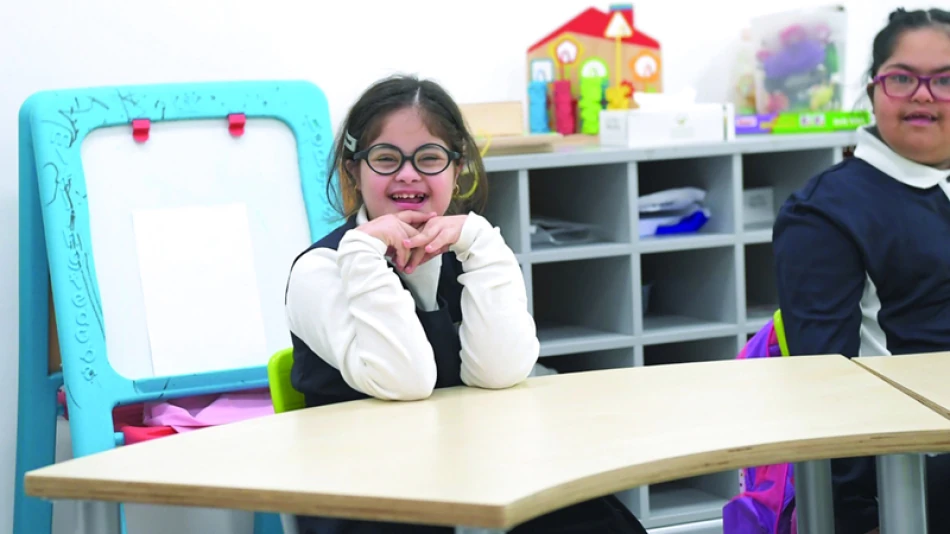
AI Unlocks New Possibilities for Empowering People with Disabilities in Education
AI Revolution: How Smart Technology Is Finally Breaking Down Barriers for Students with Disabilities
Artificial intelligence is fundamentally transforming education for students with disabilities, offering unprecedented solutions to overcome communication barriers, accessibility challenges, and individualized learning needs. Experts say AI-powered tools are not just closing the educational gap between disabled and non-disabled students—they're creating entirely new pathways for inclusive learning that could reshape how we think about special education globally.
Ten Critical Challenges AI Is Solving
Educational technology specialists have identified ten major obstacles that AI is actively addressing for students with disabilities: difficulty accessing appropriate content, communication gaps caused by sensory impairments, diverse learning needs requiring individualized approaches, shortage of specialized resources, and limited opportunities for independent learning. Additional challenges include enhancing classroom interaction, providing accurate performance assessment, overcoming mobility barriers, and integrating comprehensive learning tools that combine education with empowerment.
Real-Time Communication Breakthroughs
UNESCO reports highlight how AI technologies are revolutionizing communication for deaf and hearing-impaired students through instant sign language translation tools and smart applications that convert sign language to audible speech and vice versa. These innovations are enabling seamless integration of deaf students into mainstream classrooms—a development that mirrors successful inclusion programs in countries like Finland and Canada, but with far greater technological sophistication.
Virtual Reality Opens New Worlds
Augmented and virtual reality technologies powered by AI are creating immersive educational environments for students with mobility impairments. These students can now explore rich learning experiences from home, participating in virtual field trips, laboratory experiments, and interactive lessons without physical constraints—a capability that became particularly valuable during the COVID-19 pandemic and continues to expand educational horizons.
Expert Perspectives on the AI Education Revolution
Dr. Stephen Glasgow, Deputy President of Edinburgh College and AI expert, emphasizes that artificial intelligence has evolved from a technological luxury to an essential tool for enabling students across all categories, particularly those with disabilities, to learn according to their specific abilities and needs. "The educational gap that once separated students with disabilities from their peers is disappearing as these technologies provide innovative solutions for hearing, visual, mobility, and cognitive impairments," Glasgow noted.
Personalized Learning at Scale
Dr. Samar Salman, an educational technology specialist, explains how AI systems are transforming educational content into multiple formats suitable for different disability categories. Text-to-speech systems help visually impaired students absorb curricula easily, while speech recognition tools enable students with mobility impairments to create content using only their voice. Advanced algorithms provide simplified visual and readable explanations tailored for students with learning disorders or autism, with smart systems adapting their approach based on individual student responses and comprehension speed.
The Shift from Fixed to Adaptive Learning
Shareefa Mohammed Ali, a specialist in disability education, highlights that AI's most significant contribution is personalized learning. Smart systems analyze student performance, identify strengths and weaknesses, and deliver individualized training content matching each student's capabilities and progress rates. These systems can monitor student development and adapt to emotional and cognitive states, providing support precisely when needed.
Eliminating the Traditional Classroom Model
Curriculum design expert Amal Farah argues that AI has abolished the concept of fixed classrooms, replacing it with adaptive learning—exactly what students with disabilities need. Each student can progress at their own pace within an encouraging, interactive environment. This represents a fundamental shift from the one-size-fits-all approach that has dominated special education for decades.
Investment Strategy and Market Implications
Despite technical and financial challenges facing some educational institutions, the UAE's general direction indicates expanding integration of AI as a fundamental pillar in supporting people with disabilities. This strategic investment approach positions the Emirates alongside other tech-forward nations like Singapore and Estonia in prioritizing inclusive education technology.
Economic and Social Returns
The investment in AI-powered inclusive education represents more than an ethical commitment—it's a strategic choice toward more equitable education that guarantees every student, regardless of their abilities, a genuine opportunity to learn, participate, and excel. This approach could yield significant economic returns by expanding the skilled workforce and reducing long-term social support costs.
Global Context and Future Implications
The UAE's AI-driven approach to disability education aligns with broader global trends toward inclusive technology adoption. Unlike previous assistive technology implementations that often remained siloed, current AI solutions are being integrated into mainstream educational platforms, suggesting a more sustainable and scalable approach to inclusive education.
As machine learning algorithms become more sophisticated and data collection improves, these systems will likely become even more precise in identifying and addressing individual learning needs. The success of these implementations could serve as a model for developing nations seeking to improve educational accessibility without massive infrastructure investments in specialized facilities.
Most Viewed News

 Sara Khaled
Sara Khaled






